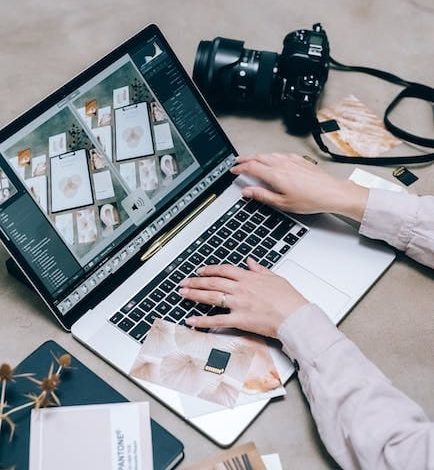
Isolating subjects in photography can instantly make your images more striking and professional. When you separate the subject from the background, every detail stands out, drawing the viewer’s attention exactly where you want it. This skill is key for portraits, products, and landscapes, giving your photos a clean and modern look that pops.
Learning subject isolation improves your photos and allows for more creative, dynamic shots.. With the right techniques, you can turn ordinary scenes into images that feel polished and intentional. Keep reading to discover essential tips that will help you make your photos stand out in any setting.
Understanding the Importance of Subject Isolation
Isolating your subject is an important technique in modern photography. Focusing on the main subject removes distractions and makes your photos look cleaner and more professional. This helps your images clearly show what you want to highlight.
This technique works for both commercial and personal photography. It makes the subject stand out and keeps viewers engaged. Learning to isolate subjects gives your photos a polished, modern look.
Choosing the Right Background
The first step in isolating your subject is picking the right background. Busy backgrounds can distract from the subject, so simple colors like white, gray, or pastels work best. These choices make your photos look clean and professional.
You can also blur the background to keep the focus on the subject and add depth. This effect can be done while shooting or edited later. The key is to make sure the background doesn’t take attention away from the subject.
Utilizing Lighting Techniques
Lighting is very important when isolating subjects in photography. Good lighting highlights the subject and makes it easier to separate from the background. Soft, even light works best because it avoids harsh shadows.
Natural light, especially during the golden hour, gives warm and flattering tones. Well-lit subjects stand out and make photos look professional. Learning lighting techniques helps your images look clear and engaging.
Types of Lighting to Consider
Natural light makes photos look bright and natural. Shooting outside or near windows lets sunlight highlight your subject, creating a soft and appealing effect. This is particularly effective for portraits, product photography, and candid everyday scenes.
Studio lighting gives more control over your shots. Softboxes and ring lights shape light exactly how you want it, while backlighting adds depth when used carefully. Experimenting with various setups allows you to discover optimal lighting and ensures your subject remains clear and visually engaging.
Mastering the Art of Composition
Composition is critical in modern photo designs, and it’s essential to pay attention to the placement of the subject in relation to the background. The rule of thirds is a helpful guideline to create balanced images. By positioning the subject off-center, you create a visual journey for the viewer’s eye, leading them to explore the entire photograph.
Another technique is to utilize negative space. This involves leaving ample empty space around your subject, which can create an elegant look. Negative space helps to emphasize the subject and can make an image feel sophisticated and modern. It’s particularly effective in portrait photography and product shots, as it draws immediate attention to either the subject or the object.
Post-Processing Techniques for Clean Isolation
After capturing your images, post-processing is the key step to refining and enhancing them. This stage lets you adjust colors, contrast, and sharpness to create a polished and professional look. Using tools and apps makes it easy to edit photos and focus on the main subject.
Tools such as layer masks and feathering help blend the subject smoothly with the background. These techniques ensure the edges are clean and natural, giving your images a professional finish. Mastering post-processing allows you to turn good shots into striking visuals that truly stand out.
Step-by-Step Guide to Subject Isolation
Start by opening your image in your preferred editing software. Make sure the file is clear and ready for adjustments. This step sets the foundation for a smooth editing process.
Next, select your subject using tools like the lasso, pen, or quick selection tool. Carefully outline the edges to make sure the subject stands out clearly. Then, refine the edges to remove any rough lines or unwanted parts for a cleaner look.
Once the subject is ready, remove the background by deleting the layer or filling it with a solid color. For a faster option, you can get a jump start using an image background remover, which makes the process easier for beginners. Finally, save your work in a format that fits your needs, like PNG or JPEG, to finish.
Enhancing Your Isolated Subjects
After isolating your subjects, consider applying final touches to enhance the overall look. Tweaking the color balance, saturation, and contrast can infuse life into your images. Additionally, adding shadows or reflections can create a sense of realism, making your subject pop against the new background.
Don’t forget to experiment with different filters and textures. Subtle effects can elevate your modern photo designs, making them stand out even more. Remember to keep the aesthetics clean to uphold the modern feel of your work.
Applying Your Skills to Create Modern Photo Designs
Using these techniques in your photography opens up many creative possibilities. Whether you are a beginner or a pro, mastering them can make your portfolio stand out. Strong images grab attention and show your skill and creativity.
Isolating your subjects well gives you a powerful way to improve your work. Trying these methods helps you create modern, eye-catching photos. Start using them today and watch your photography improve.
Elevate Your Photography with Subject Isolation
Mastering subject isolation can turn simple photos into striking, professional-looking images. Using the right lighting, backgrounds, composition, and editing makes every shot stand out. Applying these methods consistently helps your images stand out and leaves a lasting impression.
Start putting these tips into practice and watch your photography skills grow. Embrace creativity, experiment with different techniques, and see the difference subject isolation makes in your work.
Check out our other blog posts for more informative content!



